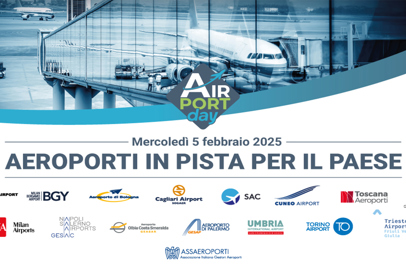13 May 2020
IATA: don’t make a slow recovery more difficult with quarantine measures
Quarantine measures on arrival would further damage confidence in air travel
The International Air Transport Association (IATA) released new analysis showing that the damage to air travel from COVID-19 extends into the medium-term, with long-haul / international travel being the most severely impacted. Quarantine measures on arrival would further damage confidence in air travel. A risk-based layered approach of globally harmonized biosecurity measures is critical for the restart.
Air travel scenarios
IATA and Tourism Economics modeled two air travel scenarios.
Baseline scenario
This is contingent on domestic markets opening in Q3, with a much slower phased opening of international markets. This would limit the air travel recovery, despite most forecasts pointing toward a strong economic rebound late this year and during 2021.
IATA: "In 2021 we expect global passenger demand (measured in revenue passenger kilometers, RPKs) to be 24% below 2019 levels and 32% lower than IATA’s October 2019 Air Passenger forecast for 2021. We don’t expect 2019 levels to be exceeded until 2023. As international markets open and economies recover, there will be further growth in air travel from the 2020 low point. But even by 2025 we would expect global RPKs to be 10% lower than the previous forecast".
Pessimistic scenario
This is based on a slower opening of economies and relaxation of travel restrictions, with lockdowns extending into Q3, possibly due to a second wave of the virus. This would further delay the recovery of air travel. In this case, global RPKs in 2021 could be 34% lower than 2019 levels and 41% below our previous forecast for 2021.
“Major stimulus from governments combined with liquidity injections by central banks will boost the economic recovery once the pandemic is under control. But rebuilding passenger confidence will take longer. And even then, individual and corporate travelers are likely to carefully manage travel spend and stay closer to home,” said Alexandre de Juniac, IATA’s Director General and CEO.
Long-Haul Travel Impact will be Longer Lasting
When the recovery begins, it is expected to be led by domestic travel. An IATA survey of recent air travelers conducted in April 2020 found that 58% are somewhat or very likely to restrict their initial travel to domestic journeys. Domestic Revenue Passenger Kilometers (RPKs) will only recover to 2019 levels by 2022. International RPKs are only expected to return to 2019 levels in 2024.
“The impacts of the crisis on long-haul travel will be much more severe and of a longer duration than what is expected in domestic markets. This makes globally agreed and implemented biosecurity standards for the travel process all the more critical. We have a small window to avoid the consequences of uncoordinated unilateral measures that marked the post-9.11 period. We must act fast,” said de Juniac.
Avoid Quarantine Measures
IATA strongly urges governments to find alternatives to maintaining or introducing arrival quarantine measures as part of post-pandemic travel restrictions. IATA’s April survey of recent air travelers showed that:
86% of travelers were somewhat or very concerned about being quarantined while traveling,
69% of recent travelers would not consider travelling if it involved a 14-day quarantine period.
“Even in the best of circumstances this crisis will cost many jobs and rob the economy of years of aviation-stimulated growth. To protect aviation’s ability to be a catalyst for the economic recovery, we must not make that prognosis worse by making travel impracticable with quarantine measures. We need a solution for safe travel that addresses two challenges. It must give passengers confidence to travel safely and without undue hassle. And it must give governments confidence that they are protected from importing the virus. Our proposal is for a layering of temporary non-quarantine measures until we have a vaccine, immunity passports or nearly instant COVID-19 testing available at scale,” said de Juniac.
Temporary non-quarantine measures
IATA’s proposal for a temporary risk-based layered approach to provide governments with the confidence to open their border without quarantining arrivals includes:
Preventing travel by those who are symptomatic with temperature screening and other measures
Addressing the risks of asymptomatic travelers with governments managing a robust system of health declarations and vigorous contact tracing.
Il riconoscimento reciproco delle misure concordate è fondamentale per la ripresa dei viaggi internazionali.
The mutual recognition of agreed measures is critical for the resumption of international travel. This is a key deliverable of the COVID-19 Aviation Recovery Task Force (CART) of the International Civil Aviation Organization (ICAO).
“CART has a very big job to do with little time to waste. It must find an agreement among states on the measures needed to control COVID-19 as aviation re-starts. And it must build confidence among governments that borders can be opened to travelers because a layered approach of measures has been properly implemented globally. IATA and the whole industry support this critical work,” said de Juniac.
Edited by Alisè Vitri
Text source: © IATA Corporate Communications
Visual: Sisterscom.com / Shutterstock
All rights reserved. Reproduction prohibited.
Copyright © Sisterscom.com
You might be interested in
Useful Info

Authority
Olbia Airport will be named after Prince Karim Aga Khan IV
ENAC pays tribute to the founder of modern tourism in Costa Smeralda: a key figure in the history of aviation and the development of Sardinia
Useful Info

Authority
Airport Day
The national event, organized by Assaeroporti, is held on February 5 to celebrate the strategic role of the 17 participating Italian airports
Useful Info

Authority
ENAC: reorganization and future challenges of air transport
At the 2025 Meeting, a discussion on innovation, sustainability, innovative air mobility and quality of services, in line with the country's strategic objectives

